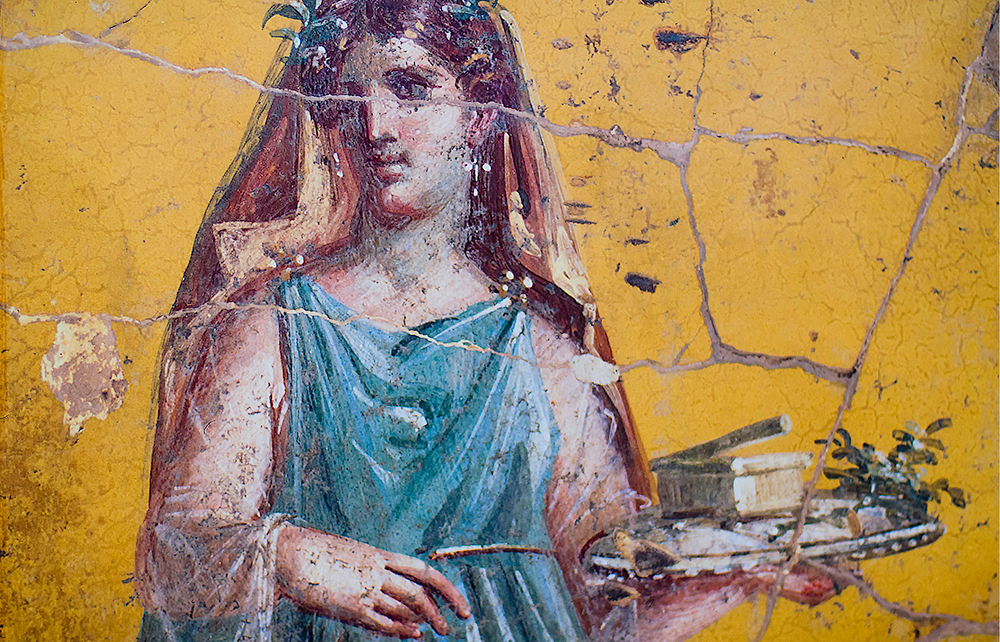Frescoes are always the lead story in reports of the latest finds from Pompeii, but they are only a part of a much bigger picture.
Before it was destroyed in ad 79 Pompeii had been a flourishing port town (the explosion of Vesuvius altered the whole landscape) with a population of around 11,000, offering trading facilities to inland towns like Nuceria and Nola. It produced a huge variety of foodstuffs and far more wine than it needed, which it exported around the Mediterranean, as it did garum, a favourite Roman fish-based sauce, produced by the local Scaurus family. Plentiful foreign coinage testifies to the extent of its external connections (as does an ivory statuette of an Indian goddess). The whole Naples region was dotted with the villas of the Roman elite, who in the summer decamped there in numbers from smoky, malaria-ridden Rome: they required, and paid for, high-class services from the locals.
So too did the Pompeian elite. The exquisite frescoes on the walls of their homes testify to their good taste and to the existence of fine painters in Pompeii (there is evidence of different subject specialisations in the workshops). Equally fine is the glassware, but there are also good-quality everyday examples, serving Pompeii’s middle classes. They and the poor lived in tenements, many of them in rented-out extensions to the houses of the rich. Shops and workshops (dyeworks, perfume, pottery, etc.) were squeezed in between these properties, providing a whole range of goods and services in an expanding retail economy. There were two theatres, a gladiatorial arena and 800 shops (160 selling cheap food and drink), all attracting business. Further, the skeletal remains of those killed by Vesuvius suggest a population in decent health, many living to a good old age. All in all, Pompeians seem to have lived well above subsistence level. This was an entrepreneurial urban world, into which the nouveaux riches (many of them freed slaves) were easily absorbed. No wonder a graffito announced salve, lucrum: ‘Hail, profit!’ – until Vesuvius buried the lot.







Comments